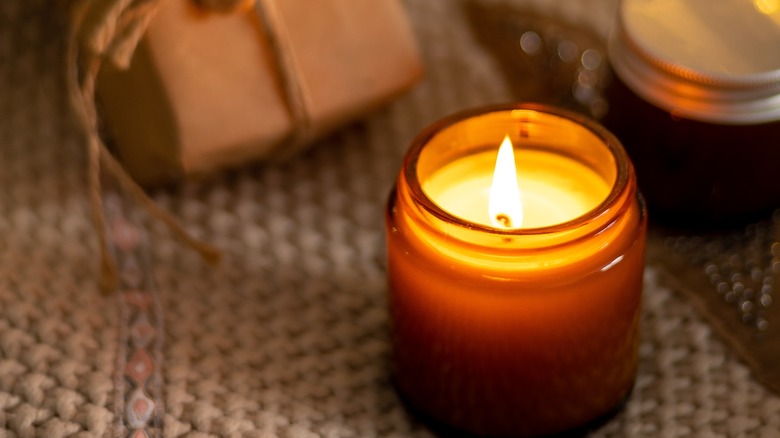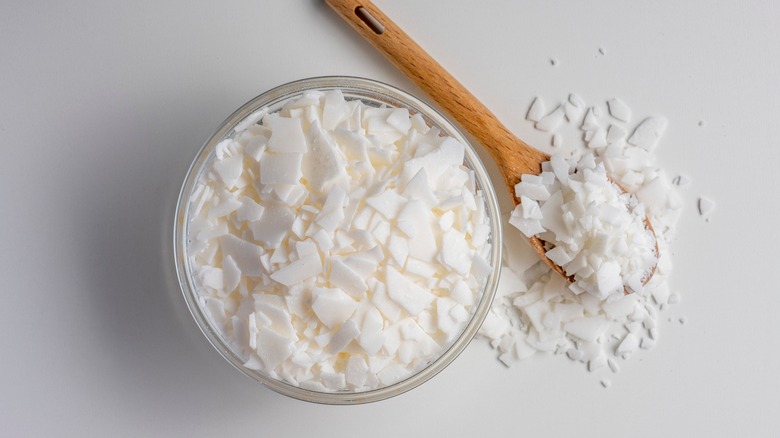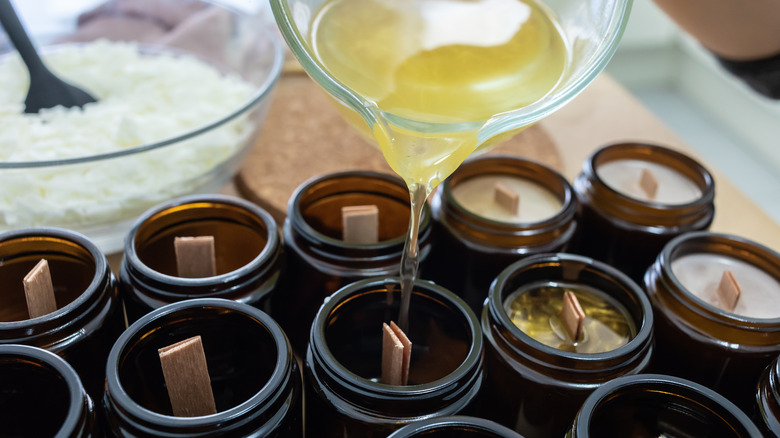Here's What You Need To Know About How Candles Are Really Made
Candles are something we turn to on birthdays, special anniversaries, Christmas, and even religious ceremonies. They're the radiant, relaxing, and oftentimes sweet-smelling backdrop to cherished moments in our lives. It's hard to resist the urge to spend a few extra minutes in the candle aisle at the store, perusing the many different designs and scents.
The history of candle-making is an interesting one. What began as our ancestors soaking twigs in animal fat has now evolved into a science and art all of its own, according to Made How. While over time animal fat was moved to the back of the shelves as a less preferred base for candles, the petroleum-based paraffin grew in popularity. Today, there are many different kinds of wax that both professional and amateur candle-makers use, some of which include beeswax, coconut wax, and soy wax, per Homesick.
One thing that likely crosses most of our minds when we purchase a brand new candle is what goes into making one. Here's what you need to know about how they're crafted.
These are the first steps
Candle-making looks deceptively simple but there is quite a lot of precision involved in the process, per 11 Alive. The first step is to acquire the wax of choice. Coconut and soy are environmentally-friendly options while paraffin, although cheap, is imperishable, according to Homesick. The owner of Candlessentials Tashah Nicole prefers eco-friendly options. "Coconut wax is a more renewable source, which is one reason it's become so popular in the last few years," she shares with The Good Trade.
Factory-level candle-making involves heating the wax in a big wax melting tank, via Made How, but home-business owners might use a "double-boiler," as candler Sheri Vegas does, via YouTube. Either way, careful attention has to be paid to the wax's melt point, reports Village Craft and Candle. Candle-makers can enlist the aid of a thermometer to make sure they remain within the recommended degrees which can go up to 200 degrees Fahrenheit. Scents and tints are added as the next step, per Made How.
Once the wax is melted, the focus moves to the wicks. Wicks too, have gone through various adaptations over time, and what we're left with today are mostly the cotton braided kind, per Made How. There are also wooden or hemp-based wicks. Gluing the wick precisely where the candle-maker wants them (which is usually in the middle) at the base of the container is the next step, adds Today. Wicks are usually chemically treated to ensure proper burn time, via Made How.
What's the final step in the candle-making process?
The final step in how candles are made has to do with pouring the liquid wax into the containers, per Today. The wax is usually allowed to cool before it's poured into the jars containing the wicks, according to Made How. Making sure the wicks remain in the middle while pouring the wax mixture in is an important part of the process, reports The Good Trade. All that's left to be done now is to let them cool and smooth out the surface with more melted wax once the bottom half solidifies, via Today.
Making a candle at home can be a fulfilling experience and Candlessentials proprietor Tashah Nicole thinks a little patience goes a long way. "Once you land on the perfect wax, oil, and wick combination, it'll all be worth it!" she tells The Good Trade.
Are you looking for the perfect candle to gift someone? Now that you are privy to what you need to know about how candles are really made, maybe you can try your hand at making some yourself.


